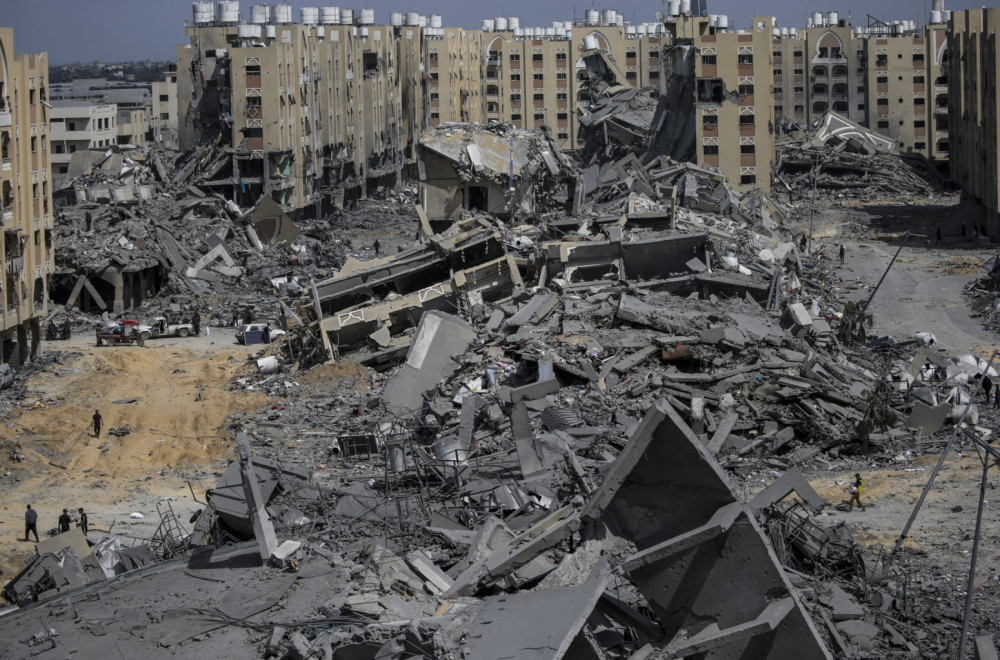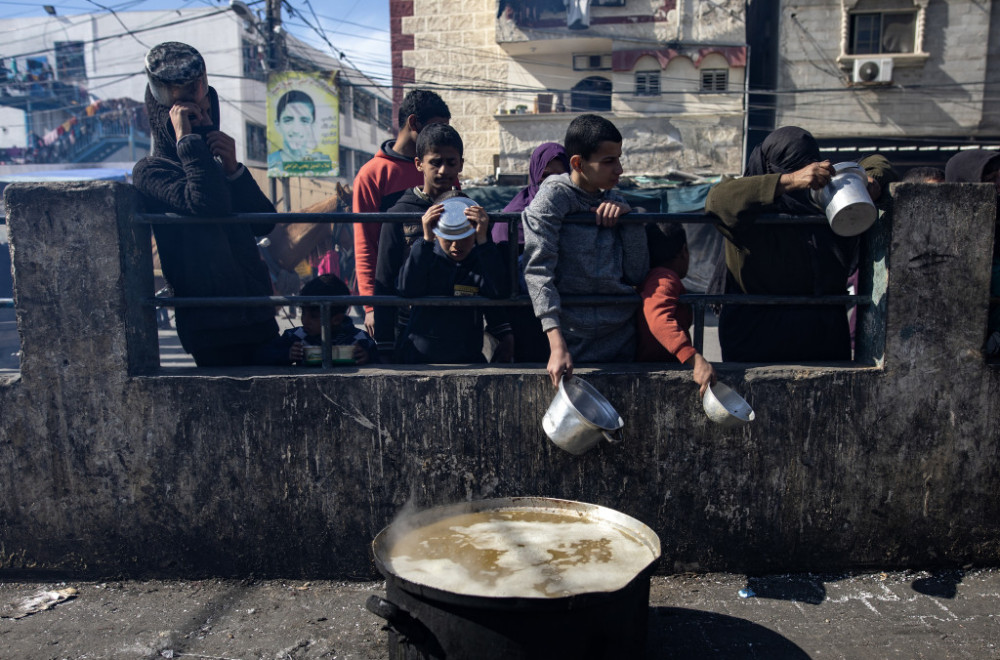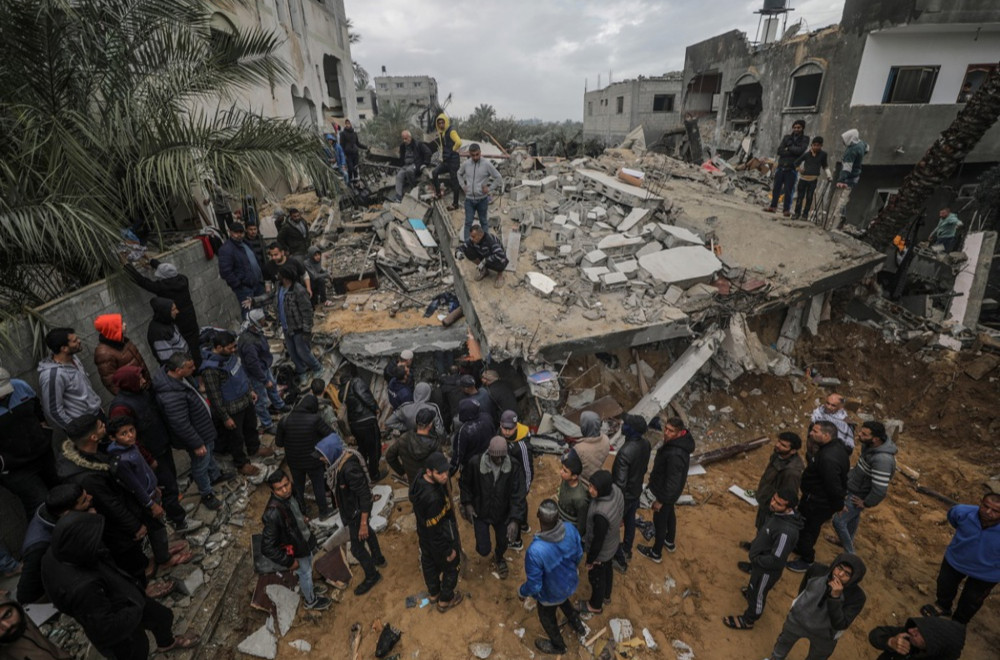07.10.2024.
8:22
The first anniversary of the largest war in the Middle East: 43,000 dead
The war between Hamas and Israel began one year ago today with attacks on Israel from the Gaza Strip.

As it turned out, it was the largest military conflict in the Middle East since the Yom Kippur War of 1973, with the highest number of casualties in the history of Arab-Israeli conflicts overall.
It is estimated that more than 43,000 people have died in the war, which continues until the end of September this year, of which 41,431 are Palestinians, the vast majority in the Gaza Strip.
More than half of the buildings in the Gaza Strip have been destroyed, and almost the entire population of Gaza, approximately 2.3 million people, has been displaced.
Early in the morning on October 7, 2023, the Palestinian extremists of Hamas, the Popular Front for the Liberation of Palestine, Islamic Jihad, carried out an incursion into Israel from the Gaza Strip, which shocked the world with its brutality.
The anniversary of the Yom Kippur war in 1973, that is, a Jewish religious holiday, was chosen as the moment of the attack.

Starting at 6:30 am, on the morning of October 7, 5,000 missiles were fired at Israel, according to Hamas. According to Israeli sources, there were about 3,000 of them.
Areas around the Gaza Strip were targeted, such as Ashkelon north of Gaza, but also others such as Gadera west of Jerusalem, Herzliya north of Tel Aviv, Tel Aviv itself.
The terrorist attack by Hamas extremists, members of the Al Qassam Brigade, on civilians led to the removal and murder of 1,195 people, of which 815 were civilians, Israelis and some foreigners.
251 people were captured and taken inside the Gaza Strip as hostages. It was the most devastating terrorist attack on Israeli civilians in the history of the Arab-Israeli conflict.
The attack took place by land, from the sea, from the air. About 3,000 Palestinian terrorists entered Israel then, using hoes, cars and other vehicles. From the sea, speedboats were used, an amphibious attack was carried out on Zikim. Drones and paragliders were used from the air.
On the same day, in the evening, about 150 more missiles were fired at Israel.
Civilians were killed in nearby agricultural communities, kibbutzim, houses were set on fire, and numerous civilians were kidnapped as hostages. There were beatings, mutilations, massacres, and children were also abducted.
During the attack on Netiv HaAsara, a moshav, an agricultural cooperative located north of the Gaza Strip, 22 people were killed.
In the attack on Kibbutz Beeri, east of Gaza, 132 people were killed, of which 101 were civilians, and many went missing.
During the attack on Nir Oz, south of Beera, approximately a quarter of the kibbutz's 400 residents were kidnapped or killed.

During the attack by Al Qassem terrorists, a militant group of Hamas, on the Supernova music festival held outdoors near Reim, on the morning of October 7, 364 people were killed, including 17 members of the security forces, and 40 people were kidnapped.
Israeli forces responded shortly after the attack, first with air strikes, about an hour after the fighting began.
Then the operation of the Israeli forces called "Iron Swords" was launched in the Gaza Strip. Tens of thousands of reservists were mobilized, a state of emergency was declared in an area of 80 kilometers around Gaza.
At the same time, the Israeli electricity company, normally the source of about 80 percent of the electrical energy within the Gaza Strip, cut off the supply.
At the same time, Israel has increased security in the West Bank, as well as along the border strip towards Lebanon or Syria.
Israeli forces targeted Hamas facilities, military facilities, tunnels while targeting the Gaza Strip. As early as October 9, Israeli forces announced that 426 Hamas targets, such as Beit Hanun, had been hit. On the same day, a complete blockade of the Gaza Strip was announced.
On that day, Yoav Galant, Israel's defense minister, declared: "We are fighting against human animals and we are acting accordingly" which caused outrage around the world.
Under Washington's pressure, the blockade was eased, and since October 19, humanitarian aid has been allowed to arrive in Gaza, which began modestly on October 21. On October 13, Israeli forces called for the evacuation of civilians from Gaza City, south of Wadi Gaza. A deadline of 24 hours is given to withdraw.
They claimed that Hamas is preventing the evacuation of civilians and that it is using them and medical facilities and vehicles as "human shields".
During the bombing of southern Gaza on October 17, according to Palestinian sources, more than 70 people, including entire families, were killed. The cause of the explosion at Al Ahly Hospital remains disputed.

A ground attack by over 100,000 Israeli soldiers began on October 27. According to Palestinian sources, the area around Al-Quds Hospital, where around 14,000 civilians were housed, was targeted.
The next day, the Jabalija refugee camp was targeted, killing around 50 people. According to Israeli sources, among the dead were important commanders of Hamas and other extremists, who used the system there, a network of underground tunnels.
Jabaliya was bombed again on October 31, when a building in the center of Gaza was also destroyed, killing 106 civilians, of which, as reported, about half were children.
During the attack on the Jabalija refugee camp on November 18, around 80 people were killed. At that time, the Doctors Without Borders convoy was also hit, killing two people.
On November 22, with the mediation of Qatar, a truce was agreed upon for 4 days, starting on the 24th. The deadline was then extended. The agreement stipulated the release of 50 hostages held in Gaza and the parallel release of 150 detained Palestinians.
Hostilities resumed on December 1, with mutual accusations of truce violations.
85 men, 13 women, and two children were held hostage by Palestinian militants. Israeli troops further advanced to the centers of Khan Yunis, Jabalia and elsewhere. Palestinian civilians evacuated further south to Rafah.
Then, on December 7th, 150 Palestinian men were detained, and another ten on December 10th. According to Israeli sources, they were Hamas militants who surrendered. That's the time when videos of men stripped down to their underwear appear, who have toured the world.
On the first day of 2024, Israeli forces withdrew from northern Gaza. Information is emerging that the structure of Hamas has mostly disappeared in that move. Two Al Jazeera journalists were killed in a rocket attack on January 7.
The next day, an Israeli tank targets a facility with humanitarian personnel, clearly marked. The most tragic day for Israeli military formations was January 22, 2024, when 24 soldiers died when a building collapsed. It was not clear whether it was caused by artillery fire or by mines.
A UNRWA convoy was fired upon by Israeli forces from the sea on February 5, halting their activities for three weeks.
On February 12, Israeli troops begin systematic bombing of Rafah. At the end of the month, on February 29, over a hundred Palestinians were killed and 750 wounded in a food queue, southwest of Gaza.

Israeli forces detained Al Jazeera journalist Ismail al-Ghul on March 18, along with about 80 other people, including other journalists and medical staff. Their equipment was confiscated and destroyed. Al Ghul was soon released but died while reporting on the assassination of Hamas leader Ismail Haniyeh on July 31, 2024, near Haniyeh's family home in Al Shatti in northern Gaza.
On April 1, seven aid workers, British, Polish, Australian, Irish, are killed in an Israeli airstrike south of Deir al-Balah. On the same day, Israel bombed targets in and around Damascus, including the Iranian embassy.
Iran then launched a series of airstrikes against Israel. By May 15, an estimated 600,000 people had fled Rafah. After that, the International Court of Justice, on May 24, ruled that Israel must stop the offensive in Rafah. During the Israeli attack on the Nuseirat refugee camp on June 8, 274 Palestinians were killed. The four hostages were released.
After Khan Younis' evacuation order, by August 2024, as much as 84 percent of the Gaza Strip was the area where civilians were ordered to withdraw.
On September 10, Yoev Galant stated that Hamas's armed wing had been largely destroyed, but that it was still participating in the insurgency in Gaza. It was then that the redirection of the center of gravity of Israeli activities to the north of the country, against Hezbollah, was actually announced.
Two days later, Israeli commanders announced that Hamas had been destroyed in Rafah, including the chain of command, that 2,308 militants had been removed and 13 km of tunnels had been destroyed. On the West Bank, incidents also occurred in parallel, with numerous victims.
On August 28, Israel launched a military operation in the northern part of the West Bank, the most massive in the last two decades. At the same time, several terrorist attacks took place in Israel, such as on November 30, 2023, when three civilians were killed and 11 were wounded, at the Givat Shaul interchange in Jerusalem.
Hamas claimed responsibility. Two Israeli civilians were killed and four wounded in Kiryat Malachi on February 16, 2024.

On October 8, 2023, Hezbollah launched artillery attacks on Israel, on the Sheba farms, from Lebanon. Daily skirmishes spilled over to the Golan. An estimated 500,000 people have been displaced in Lebanon and more than 96,000 in Israel.
On September 17, 2024, at least 12 people were killed and thousands injured across Lebanon and Syria after pagers in the possession of Hezbollah exploded, as part of a spectacular covert operation by Israeli intelligence services.
The Iranian ambassador to Lebanon, Mojtaba Amani, was also injured. The next day, the same operation continued throughout Lebanon.
Two days later, Israel launched an airstrike on Beirut. The commander of Hezbollah operations, Ibrahim Akila, and 45 other people were killed.
Seven days later, Hezbollah leader Hassan Nasrallah was killed in the same manner. Israel is also targeted from Yemen, by the Shia Houthi militants there, as on July 19, with a drone that fell near the US embassy in Tel Aviv, when 10 people were wounded.



























































Komentari 0
Pogledaj komentare Pošalji komentar